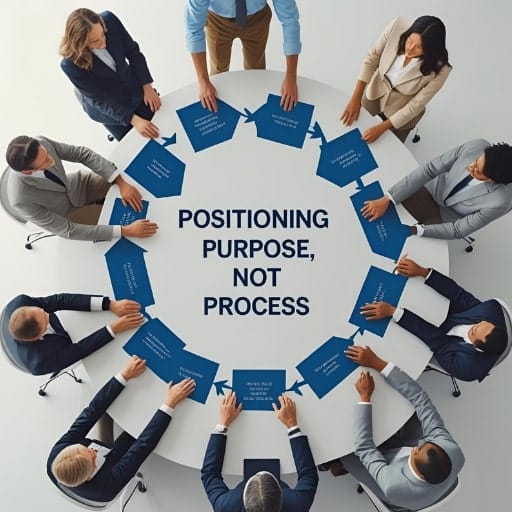Introduction: When Prestige Isn’t Enough
Despite strong balance sheets, global recognition, and massive resources, many Fortune 500 companies find themselves unable to attract the most sought-after executive talent—especially those known for innovation, agility, and disruption. The problem? A growing perception among top innovators that these legacy giants are too slow, hierarchical, and bureaucratic to support meaningful change.
At JRG Partners, we frequently hear this concern from candidates and clients alike. This article explores how large enterprises can better position themselves for attracting innovator talent to large enterprises, without compromising operational integrity or risk mitigation.
Pro Tip: Changing this perception requires hiring dynamic leaders who can act as internal brand ambassadors, a key focus for the top executive headhunters we employ.
1. The Bureaucracy Barrier: Killing Agility Before It Starts
The traditional strengths of a Fortune 500 company—structure, scale, process, and risk controls—can become liabilities when courting agile executive talent. In innovation-driven industries, decision-making bottlenecks, political landmines, and layered reporting structures can frustrate leaders who thrive on speed and autonomy.
Overcoming bureaucracy in executive recruitment requires more than just flattening org charts. It demands a willingness to rethink how authority is distributed, how ideas are evaluated, and how fast strategic pivots can realistically occur.
2. Rethinking Employer Branding for the Innovation Era
Legacy firms often rely on name recognition and prestige to attract candidates. But today’s top-tier innovators are more interested in freedom to create, room to fail, and the ability to move quickly. If your brand is known for caution rather than creativity, you may be disqualifying yourself in the eyes of these leaders—before the conversation even starts.
This is where employer branding for agile C-suite hires becomes essential. Organizations must intentionally signal openness to innovation—not just through marketing materials, but through actions, public messaging, and the behavior of current executives.
Key steps include:
- Publishing success stories about innovation driven by internal leaders
- Publicly recognizing risk-takers within the company
- Creating dedicated innovation roles with clear authority and budget
3. Positioning Roles Around Purpose, Not Process

When recruiting executives for innovation, the conversation can’t be just about responsibilities and org charts. It has to be about mission, vision, and the white space they’ll be trusted to shape.
Successful companies are now recruiting C-level executives for innovation initiatives by:
- Defining transformation goals and giving leaders the autonomy to design their own roadmap
- Making innovation a board-level priority
- Ensuring reporting lines are lean and authority is real, not symbolic
If the role feels like a figurehead within a slow-moving system, don’t expect the A-players to sign on.
4. Win the Talent, But Also Prepare to Keep Them
Winning the attention of top innovators is one challenge; retaining them in a system that might not be ready for them is another. Too often, visionary leaders join a legacy company, only to leave frustrated within 12-18 months due to internal friction, inertia, or lack of support.
Retention strategies for high-potential innovator leaders must focus on:
- Ongoing support from the CEO and Board
- Executive coaching to help navigate legacy culture
- Internal “innovation sponsors” embedded across departments
- Metrics that reward progress, not just compliance
Culture change doesn’t happen overnight—but retaining the right leaders long enough to drive it is a critical start.
5. What’s the Cost of Not Changing?
While bureaucracy has long served as a buffer against risk, today it’s becoming a barrier to evolution. Companies that fail to evolve risk losing ground to faster, nimbler competitors. Worse, they risk developing a reputation among top talent that is hard to reverse.
To future-proof your talent pipeline, Fortune 500 companies must build frameworks that allow innovation to coexist with scale. That starts with the executive team.
This perception is a major hurdle, and it’s often the reason why your new CIO is struggling to get buy-in for modernizing legacy IT systems.
Conclusion: Change Starts at the Top—But Must Be Earned
Top innovators don’t just want a title. They want a mission. A mandate. And room to maneuver.
At JRG Partners, we help large enterprises find and integrate the kind of leaders who can shift culture without breaking it. By addressing internal bureaucracy, refreshing employer branding, and realigning executive roles to support transformation, companies can finally shed the “too slow” label—and begin attracting the very talent they need to reinvent themselves.
Need help shifting perception and recruiting for innovation? Let’s talk.


